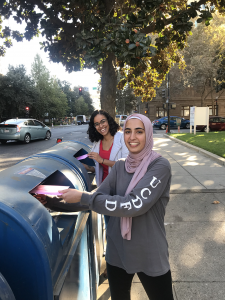
The upcoming US Presidential election, more than any other in decades, will require massive voter education and outreach efforts to ensure voter participation to overcome fears of coronavirus and COVID-19.
Voters need reliable information about the many measures being implemented across the country to mitigate virus spread in polling stations. Also, millions of voters across the nation will cast their vote remotely via mail – many of them for the first time. A robust education program will help these first-time users vote successfully.
Trending Up
Absentee voting is a vote cast outside the voting booth, traditionally for very specific and limited reasons. The majority of this is done by mail. This will remain the case in the US until such a time as online voting is approved for mainstream use.
There’s been some version of absentee voting by mail since the Civil War. Today, several states use all mail-in voting systems in all elections. Oregon, for example, uses “universal mail-in voting,” which means that all registered voters receive their ballots by mail weeks ahead Election Day.
The percentage of US voters casting ballots on a voting machine at a polling place on Election Day has declined steadily over the past decade, while the number of states offering early voting, no-excuse absentee voting, and vote-by-mail has increased. Thus, it is ever-more important to both promote these channels and to educate voters on how to use them properly to ensure their vote is counted.
- The total number of US voters who voted early, absentee or by mail more than doubled from 24.9 million (2004) to 57.2 million (2016).
- The number of U.S. citizens voting early more than doubled from nearly 10.2 million (2004) to 24.1 million (2016).
- In 2016, 16 states showed that 50% or more of their voters cast ballots early, by mail, or via absentee voting.
Because of the COVID-19 pandemic, the US will likely set a record for voters using mail-in voting. Many states are modifying their rules around absentee voting to make it more available. (Those st

ates have an asterisk in the lists below.) Of the 50 US states, 42 are allowing any voter who wants to vote by mail to do so. In some of the states, these modifications are temporary and apply only to elections in 2020.
- Eight states and the District of Columbia will conduct primarily vote-by-mail ele
ctions in November (CA*, CO, DC*, HI, NV*, OR, UT, VT*, WA) - 34 states allow voters to request a mail ballots with no excuse (AL*, AK, AR*, AZ, CT*, DE*, FL, GA, ID, IL*, IA*, KS, ME, MA*, MD, MI*, MN, MO*, MT, NE, NH*, NJ, NM, NC, ND, OH*, OK, PA, RI, SD, VA, WV*, WI, WY)
- Eight states will require an excuse to cast a ballot by mail (IN, KY, LA, MS, NY, SC, TN*, TX) (List credit CNN)
Educating voters
Most states have already begun aggressive education campaigns. Those that are starting now are getting a late start. Nonetheless, any pre-election education is better than none. Coronavirus Aid, Relief, and Economic Security (CARES) Act funding can be used to communicate with voters about election changes that are necessary due to the pandemic. Here are our tips for effectively educating your voters.
- Use a variety of channels to reach audiences.
- Repeat messages multiple times.
- Keep landing pages and websites updated.
- Deliver a single message in each touchpoint.
- Reinforce simple key points, such as the correct date of the election or the deadline for mail-in ballots.
- Remind voters of the steps needed to vote by mail successfully.
- Affirm the safety and security of your processes.
- Tell voters what you’re doing to protect them.
- Always provide a URL where voters can go for more information.
Educated voters will be key to circumvent the challenge COVID-19 represents. It will help voters who are casting ballots via mail for the first time do so successfully. As part of the US election ecosystem, we are glad to help educate and disseminate reliable information.